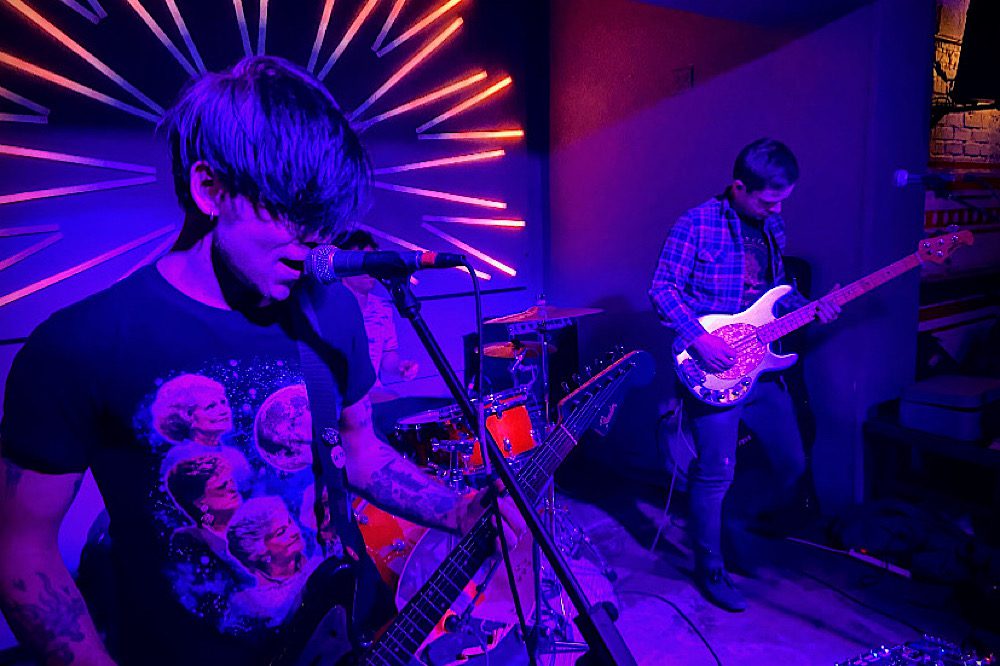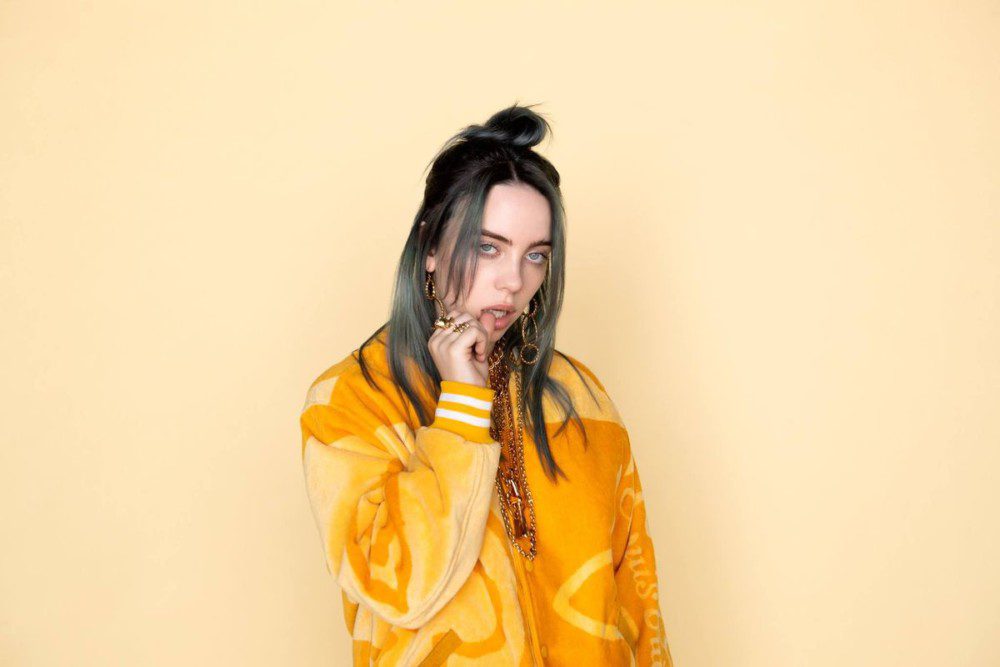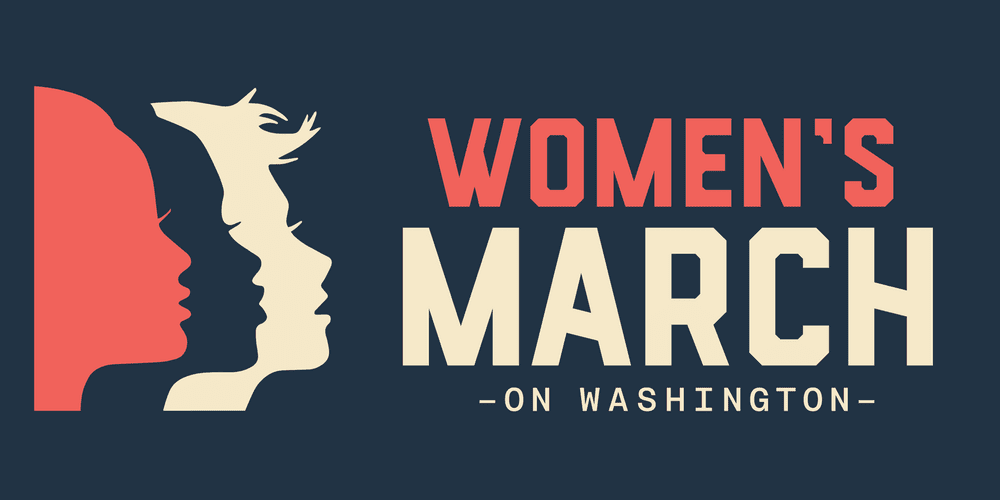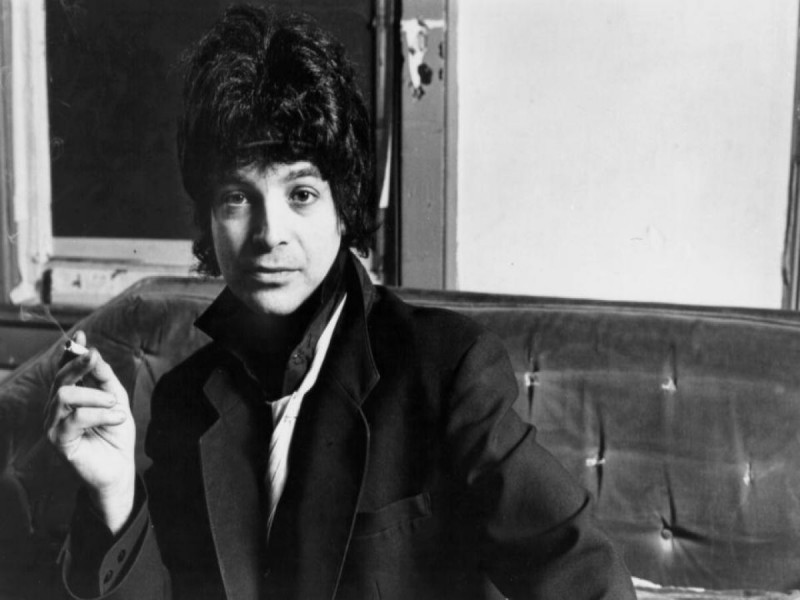RSVP HERE: BL Shirelle plays P.P.E. Into Prisons Zoom Benefit + MORE
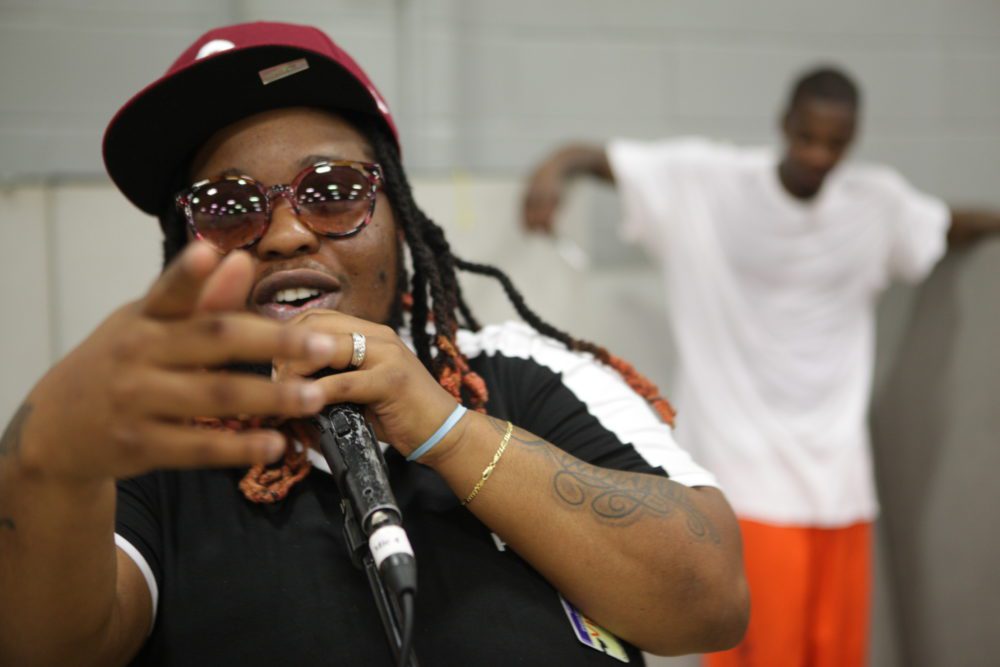

Behind the screen, so much of the live show magic can be lost, but when I saw BL Shirelle during the Die Jim Crow Records P.P.E. Into Prisons Zoom benefit I couldn’t look away. Her energy was so palpable it felt like we were in the same room together. BL Shirelle is a Philadelphia-based hip-hop artist that blends genres of rock, blues, and R&B in her recent debut LP ASSATA TROI. The record title translates to “she who struggles is a warrior,” and the record holds true to the title with personal, hard-hitting lyrics that speak truth to her journey from ignorance to enlightenment. BL Shirelle is the deputy director of Die Jim Crow Records, the first non-profit record label for incarcerated and formerly incarcerated musicians in history. As a formerly incarcerated artist herself, she has fostered an incredibly supportive community dedicated to social change.
For the past few months BL and Fury Young have booked Zoom benefits that showcase the talents of a wide variety of musicians and writers and have raised more than 20K to get PPE into Prisons via this GoFundMe. BL Shirelle is headlining the next Die Jim Crow benefit this Sunday 8/23 8-9:30pm EST. All funds raised this week will be going to a TBD facility in Florida, where COVID cases are increasing statewide and in certain prisons and jails. We chatted with BL about the making of her record, what recording in prison looks like, and her favorite zoom moments.
AF: Tell us about the making of your debut record ASSATA TROI. What’s the working dynamic with your producer Trvp Lyne like?
BL: So the making of this album was very natural. It was me reflecting on past relationships and situations in my life. Some past, some present relationships, with everyone from God to society itself. At times I’m in a very vulnerable position and at times I’m deflecting and defensive. It’s definitely a range of human emotions. I wanted to include every part of hip-hop I embody. Lyricism (“SIGS,” “Generational Curse”), storytelling (“Conspiracy”), Philly flows (“Phantom Cookie”), melodic R&B (“Ex Bitch,” “Bestie”). Sonically I wanted to embody hip-hop at its core with a sophisticated sound that travels between worlds loosely… hints of R&B, rock, blues, even gospel. That’s where Trvp comes in. He’s a phenom who plays six instruments. He also understands the sound I’m attempting to go for and it’s a very collaborative effort.We work really quickly and efficiently together. Me and TRVP have a very cohesive collaborative relationship.
AF: What does the music video for “SIGS” mean to you and how was the filming of it?
BL: The filming of it with Brian Goodwin was very concise. We wanted a focus on the lyrics due to that song being filled with wordplay and hard hitting lyrics. We wanted to cut to images from past decades due to the song being so reflective and introspective of the past. So we really keyed in on the era of the crack epidemic which impacted my life in a very significant way. A lot of the images are for you, the viewer, to determine how they make you feel, so I’ll set the stage for you but I encourage you all to interpret it how you may.
AF: How do you discover the musicians on your label Die Jim Crow and what does the process of recording in a prison look like?
BL: One thing about prison is you can count on word spreading. A lot of our connections have been made really organically through word of mouth, or through someone referring us to this person one way or another. We have band directors in each prison we work in. Their position is to make sure everything is in order prior to us arriving. They coordinate practice times (which, in order to make work, participants have to sacrifice some other activities), they develop structure to songs and compositions with other collaborators, they funnel in new musicians and artists. All our band directors have great character and leadership qualities, a unique writing and musical prowess of their own. That’s most important when recording in a prison because when DJC is granted access we are on a VERY strict time limit. We are usually allotted about five days. We’re granted entry around 7am, leaving around 6pm. First thing first, we have to build a sturdy studio in whatever conditions they give us. Could be a group room or a janitorial closet. You never know. This is most important to gather the best possible vocals we can as our mission statement is to provide a high quality platform to incarcerated musicians. Our collaborators could be two or fifteen depending on the project. We spend that time maximizing vocal deliveries, arguing (lol), creating different sounds and frequencies depending on the mood, laughing, sharing life experiences and current events, sweating, writing… Musicians are coming together creating live compositions, usually in a separate room. We eat what they eat, drink what they drink. For that moment in time we are all musicians in a creative space. No one is free or in bondage. We’re all literally just doing what we live and love to do.
AF: How did you and Fury Young meet and when did you start collaborating to host the Sunday Zoom fundraisers for P.P.E. into Prisons?
BL: Me and Fury met in 2014. I was in prison. He seen a Ted X event I was a part of and reached out to my band member. My band member gave me the mail because I was the writer, composer, and arranger for the band. We started collaborating on the PPE benefits three and half months ago. It started from a donation I made to a transitional center here in Philadelphia of some PPE masks. Fury loved the idea and wanted to expound upon it so we created a campaign to raise money to send masks into prisons. We figured a good way to raise the funds would be to do a digital show where we invite other artists on and extend our platform to raise awareness. The first show went really well and the rest is history.
AF: What are some special moments from the Zoom live streams?
BL: The special moments are really trippy for me. Like one time this kid read a short story about being a piece of bread and having sex and getting baked and shit… I’ve never done acid but I imagine it similar to that lol… we have a lot of trippy instances like that and I look forward to that person whoever they may be every week.
AF: What are other actions people can take to help promote general health care inside of prisons?
BL: That’s a very loaded and naive question. Healthcare in prisons is third world country bad. I’ve seen peoples lose 100 pounds constantly complaining they’re dying and something’s wrong while being ignored until they’re diagnosed with terminal cancer. I’ve seen that numerous times. I’ve seen medical convince people to get hysterectomies for benign cysts, I’ve seen people die from appendicitis, backed up bowels… maybe I’m too trauma riddled to answer that. I guess the first step is educating yourself on the medical conditions in prisons and then applying your strengths to attempt to make it better. My strength is making music so I highlight these conditions whenever I can, but if I had those answers I wouldn’t have seen so much death due to deliberate indifference to incarcerated people’s health. There’s a reason state-funded prisons need our masks, right?
AF: What is your advice for everyone balancing fighting a pandemic as well as fighting for social justice?
BL: Stay safe, wear your masks, walk and chew bubble gum. Don’t have a one-track mind. We can’t afford to be reckless nor can we afford to be crippled with fear.
AF: What’s the first thing that you want to do once the quarantine is over and what are your plans for the rest of 2020?
BL: I’ll be going out of the country wherever they’ll have me pretty much!! My plans for the rest of 2020 is I’ll be Executive Producing our artist B. Alexis! She’s been incarcerated since she was 17. Serving 30 years. She’s undoubtedly talented and such a beautiful, smart, focused, and driven person and it is an honor to have such a gig!
RSVP HERE (Zoom) or HERE (Facebook) for BL Shirelle, Don Kody, Elliot Skinner, Ahomari, Shawn May, Yung Hitta, Zachary, Kindkeith, and J Dot Brwn from 8-9:30pm est. Donate to PPE Into Prisons Campaign HERE.
More great livestreams this week…
8/21 No Joy via BABY.tv. 8pm EST, $5, RSVP HERE
8/21 Bright Eyes via NoonChorus. 12pm EST RSVP HERE
8/21 Albert Hammond Jr., Beto O’Rourke, Bob Guen, Bob Weir, Bruce Springsteen and more via YouTube for Joe Strummer’s Birthday. 3pm EST RSVP HERE
8/22 Black Lives Matter Virtual Comedy Show. 11pm est RSVP HERE
8/22 Sasami, Mandy Harris Williams via NoonChrous. 10pm EST, $15 RSVP HERE
8/26 Shamir via YouTube KEXP at Home. 6pm EST RSVP HERE
8/27 Widowspeak via YouTube. 9pm EST RSVP HERE
8/27 Feist, Lee Ranaldo, Nick Waterhouse reading Homer’s “The Odyssey” via YouTube. 8pm EST RSVP HERE
8/27 A Feminist’s Guide to Botany: Online Botanical Painting Session. 1:30pm EST RSVP HERE

